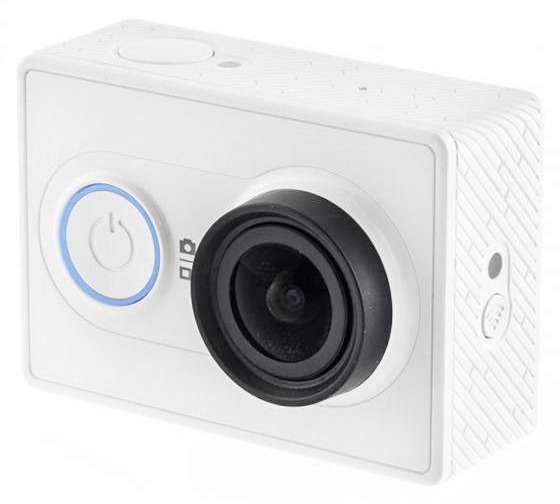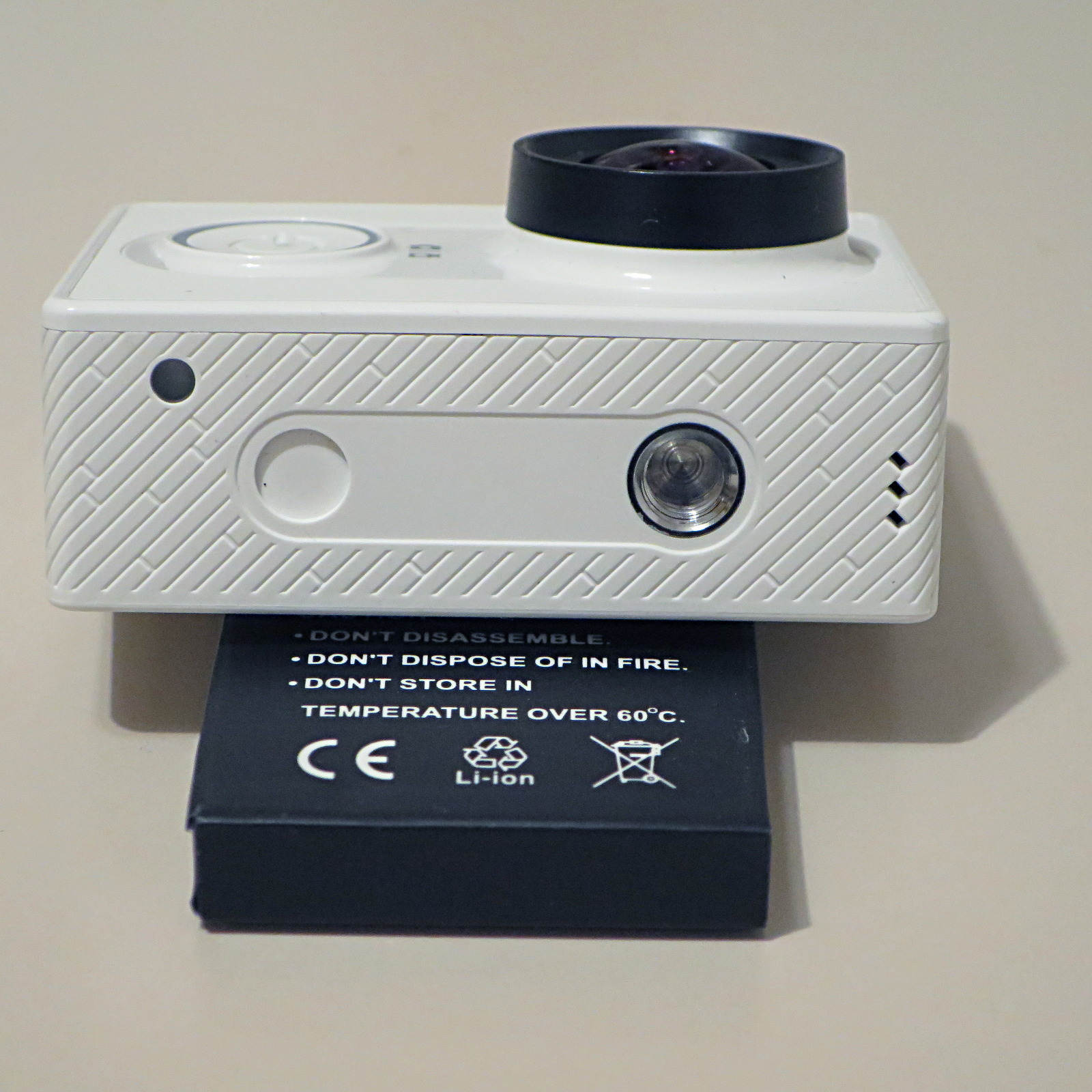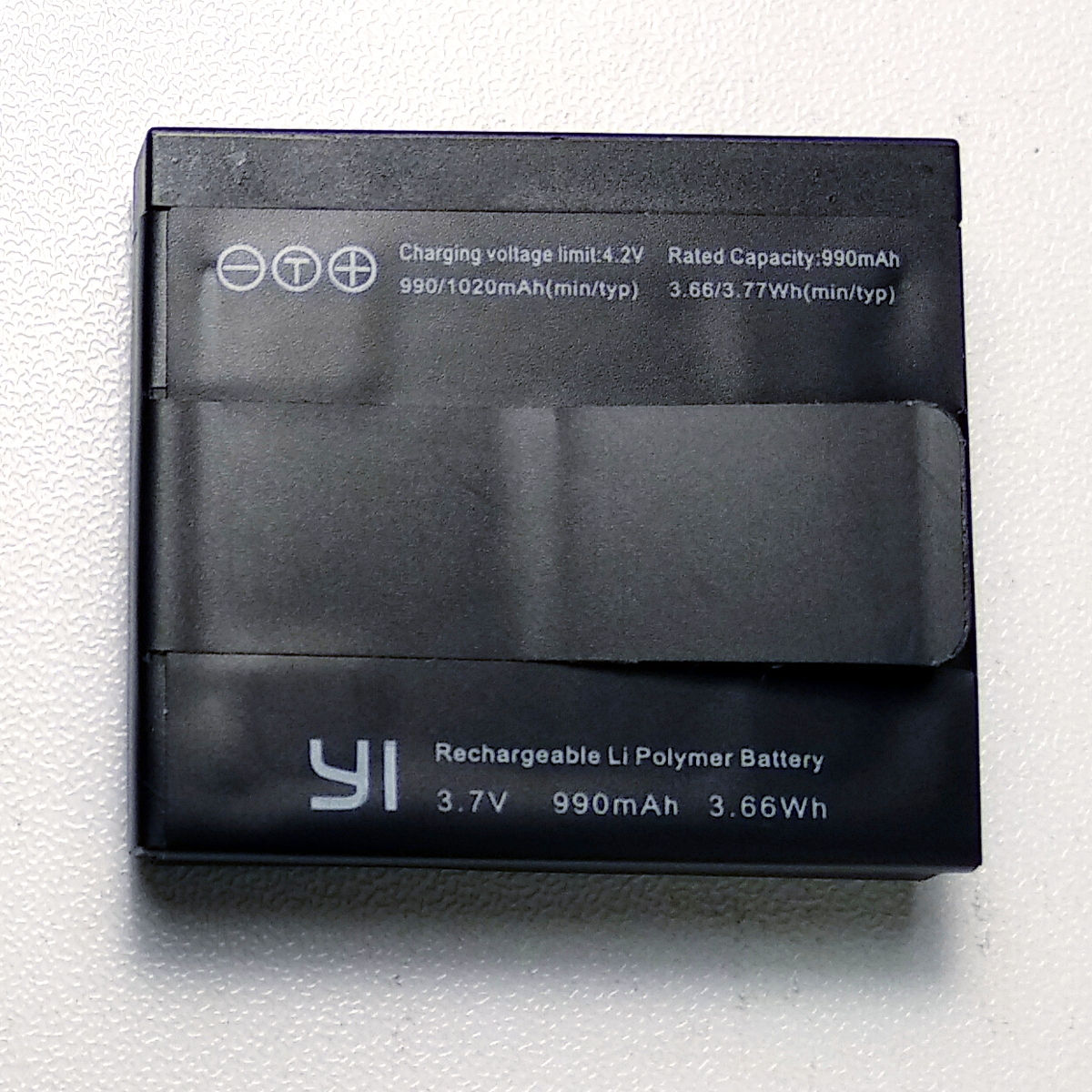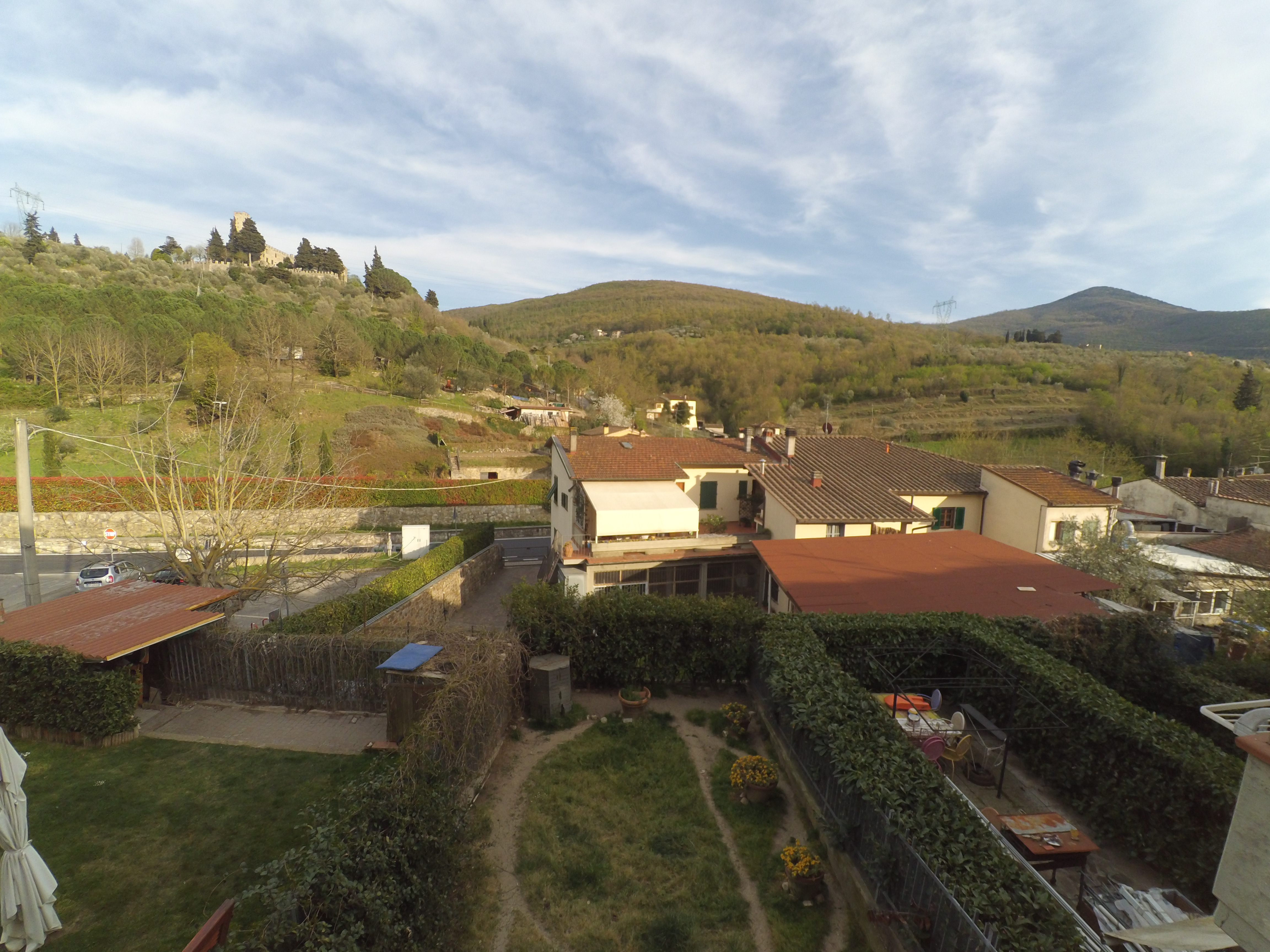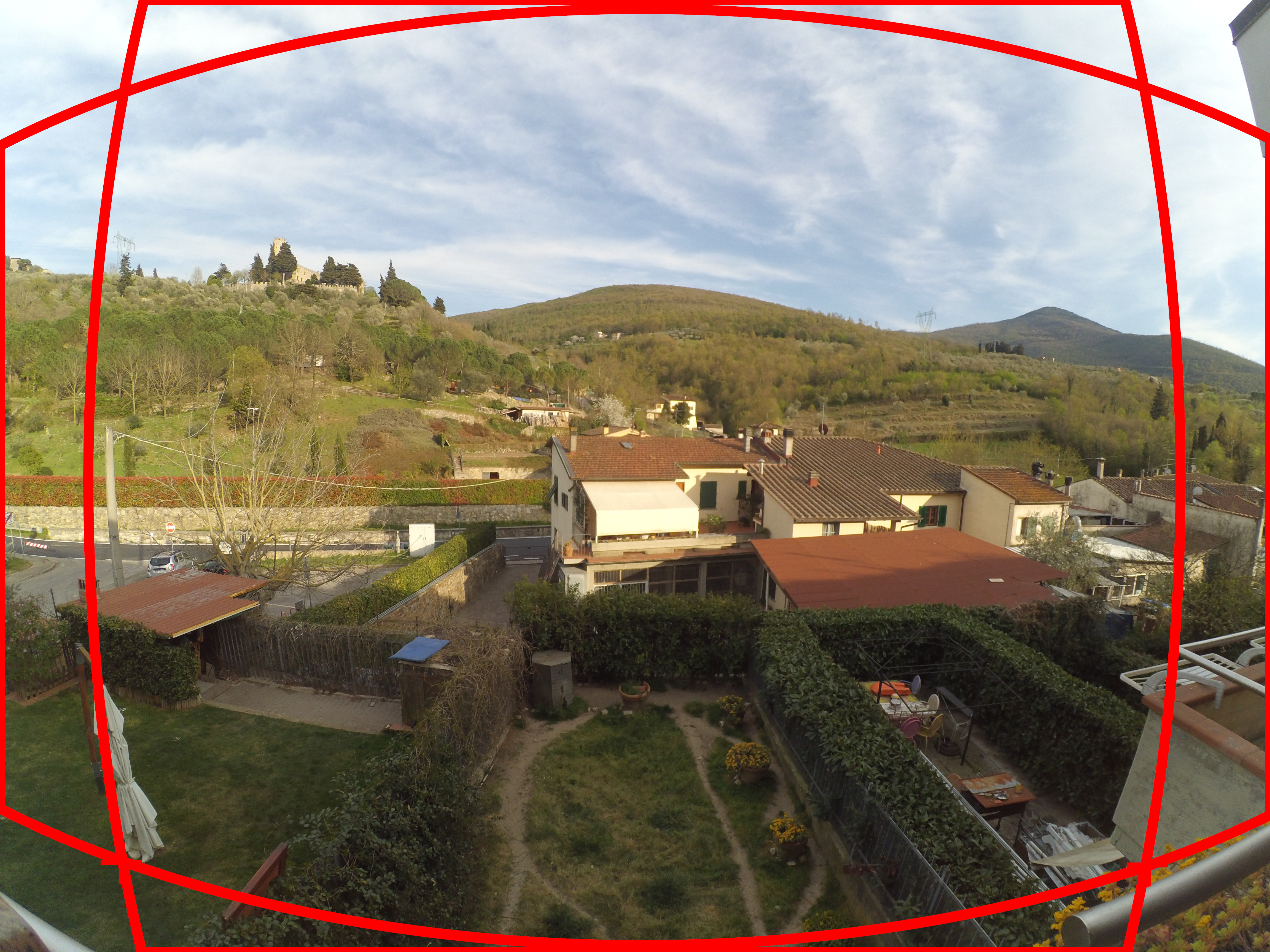Table of Contents
Action Camera Xiaomi Yi
The Xiaomi Yi action camera was introduced in 2015, despite being a low-cost cam, it feature a very good chip and sensor, producing images comparable with the most famous cameras. It lacks the screen, so evey settings must be adjusted using the companion smartphone app.
Technical Specs
| Specs | |
|---|---|
| Size | 60.4 x 42 x 21.2 mm |
| Weight | 76.6 g |
| Image Processor | Ambarella A7LS |
| Image Sensor | 16MP Sony EXMOR R CMOS BSI |
| Lens | 155ᵒ ultra wide angle glass lens |
| Aperture | F2.8 |
| Battery | 1000 mA, up to 90 minutes recording |
| Storage | Micro SD card up to 64Gb, class 10 |
| Video Format | |
| Format | AVC |
| Profile | Main@L4 |
| GOP | M=1, N=8 |
| FPS | 29.970 (30000/1001) |
| Size | 1920 x 1080 pixels |
| Bit rate | 12.0 Mb/s (Variable) |
| Video Size | |
| 1 sec | 1.45 Mb |
| 1 min | 87.83 Mb |
| 1 hour | 5.09 Gb |
Problema di formattazione microSD
Il software della telecamera non è molto flessibile con il tipo di formattazione della scheda microSD, una formattazione con GNU/Linux e i parametri predefiniti ha reso la telecamera non funzionante:
- All'accensione la telecamera emette tre beep lunghi (invece di due beep brevi).
- Premendo il pulsante di registrazione la telecamera emette tre beep lunghi e non inizia la ripresa.
- Le cartelle
DCIMeMISCvengono create, come pure il fileMISC/itm.bin.
Nessun problema invece se si partiziona e formatta la microSD con uno smartphone Android.
Il problema riguarda il parametro settori/cluster del filesystem vfat, pare che la Xiaomi Yi non accetti il valore 16 mentre funziona correttamente con 64. Per ottenere una formattazione valida è quindi sufficiente usare il comando:
mkfs.vfat -F 32 -s 64 -n "YI_CAM" /dev/sdc1
Per vedere come è formattata una microSD provare con:
fsck.vfat -v -n /dev/sdc1
Password WiFi
La password predefinita per l'access point offerto dalla telecamera è 1234567890.
Problema WiFi non funzionante
A seguito del problema di formattazione della microSD si è notato che il WiFi aveva smesso di funzionare, questi i sintomi del problema:
- Alla pressione del pulsante il LED WiFi si illumina di blu fisso.
- L'app sullo smartphone non è in grado di rilevare né di collegarsi alla telecamera.
- Premendo nuovamente il pulsante WiFi il LED non si spenge.
Per risolvere il problema è stato necessario eseguire l'operazione di reset, seguendo le indicazioni del post How to Reset Your Xiaomi Xiaoyi Action Camera if WiFi not Working:
- Togliere la microSD
- Accendere la telecamera e attendere che il LED circolare blu smetta di lampeggiare. In realtà nel nostro caso non ha smesso di lampeggiare neanche dopo 5 minuti.
- Premere contemporaneamente i pulsanti Power e WiFi per 5 secondi.
- La telecamera dovrebbe emettere 5 beep e quindi spengersi. Nel nostro caso ha fatto i beep come per un normale spengimento, ma il LED circolare ha lampeggiato viola, quindi è diventato blu fisso. È stato necessario premere nuovamente il pulsante Power per lo spengimento.
Il normale funzionamento del pulsante WiFi è il seguente:
- Premere il pulsante WiFi, il relativo LED blu si accende fisso.
- Dopo circa 10 secondi il LED blu inzia a lampeggiare, in questo momento il WiFi è attivo.
- Premere nuovamente il pulsante WiFi, il LED lampeggia velocemente alcune volte e poi si spenge.
Filesystem VFAT e timestamp
La telecamera formatta la scheda microSD con un filesystem VFAT, per definizione i timestamp su tale filesystem sono in localtime.
Se si monta la microSD su un sistema GNU/Linux è possibile utilizzare il parametro di montaggio tz=UTC, in tal modo i timestamp vengono considerati in UTC e opportunamente convertiti in localtime. In alternativa esiste il parametro time_offset.

Battery on Model Z23L vs Z25L
I purchased a second camera after some months, it turned out that the new model, which serial number is starting with Z25L, is a bit different from the older one, with serial number starting with Z23L:
As you can see, the bottom of the camera is changed a little: the alignment notch is not longer present. But the most important change is in the battery cover. The new cover is reinforced with a metal plate and its thickness is decreased by 1 mm, this means that the the battery depth is increased by 1 mm!
| Cam Model | Battery Model | Battery Size | Current Rating |
|---|---|---|---|
| Z23L | AZ13-1 | 36.5 x 32.5 x 8 mm | 1010 mAh |
| Z25L | AZ13-2 | 36.5 x 32.5 x 9 mm | 990/1020 mAh (minimum/typical) |
This means that a new battery does not fit into an older camera, instead an old battery requires a thickness of 1 mm to stay into the new camera. The only change in sizes are about battery and battery cover, it seems that sizes of the camera body is unchanged.
Battery duration
I tested some batteries for duration in video recording. Some baterries are rather old, some are brand new. The video is automatically split approximately every 1.9 Gb, using high quality video this means about 22 minutes.
During the test I experienced some unexpected stops in recording: the camera emitted a beep followed by three short beeps (
| Battery Model and Brand | Service Status | Video Recording Duration |
|---|---|---|
| AZ13-1 Yi original 1010 mA | Used, 5 years old | 70 min |
| AZ13-1 Kingma 1010 mA | Used, 5 years old | 64 min |
| AZ13-1 MTB 890 mA | Brand new | 89 min |
Lens Distortion Correction
The Yi camera features an ultra-wide angle lens, capable of an angle of view of 155°. However this leads to a strong image distortion at the edges of the frame. You can enable the Lens Distortion Correction into the camera settings, this will stretch the image, reducing the angle of view and thus loosing a portion at the edges, but it will correct the aspect of the image, reducing the barrel effect. The correction is performed by software, this means that a smaller portion of the native image captured by the sensor will be enlarged to became a full resolution image, effectively creating missing pixels by software interpolation.
In the following images you can se the difference between LDC (Lens Distortion Correction) option set to OFF and ON. The third image shows roughly how much of the frame is lost when LDC is on.
Time-lapse
For long duration time-lapse, remove the battery and connect an external power supply to the micro USB.
To start a time-lapse video you need the Android app. From the main screen select the video icon, then Timelapse. Tapping the INT/LEN label you can select the interval between each frame (from 0.5 to 60 seconds) and the video length (from 6 to 120 minutes, or off for manual stop). Once you made the settings, you can disconnect the app and turn off the camera WiFi. Start the time-lapse using the shot button. The camera remains in time-lapse mode untill you turn it off.
Do not confuse the video time-lapse mode with the photo time-lapse mode. From the main screen, Settings (gear icon) ⇒ Device Settings ⇒ Default Photo Mode you can set the default photo mode:
| Photo Modes | |
|---|---|
| Photo | Standard single shot mode. |
| Timer | Shot is taken after an initial wait of 3, 5, 10 or 15 seconds. |
| Burst | A short burst of poses is taken, you can choose 3p/s, 5p/s, 7p/s or 7p/2s. |
| Timelapse | The interval between shots can be set to 0.5, 1, 2, 5, 10, 30 or 60 seconds. |
The photo time-lapse start when you press the shot button; press it again to stop the sequence. The single photos are saved, a video is not created.
The Android App
We installed the Android application YI Action version 3.9.3, it required access to media files, camera and location, we revoked the access to contacts and phone.
To date (April 2021) the YI Action app is not longer hosted on the Google Play, may be due the dispute with the United States government. You can find the app from the www.xiaoyi.com site.
As reported by several users, if you have trouble connecting to the Yi camera WiFi, try to disable data connecton, leaving only WiFi active.
Firmware
- Model Z23L factory firmare 1.2.13
- Model Z25L factory firmare 1.5.6, upgraded to 1.5.12
Use the SD card to update the firmware version by placing “firmware.bin” on the SD card and powering on the device.
